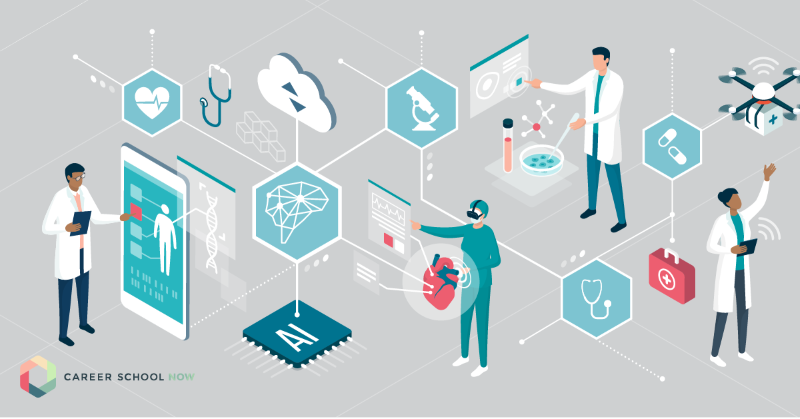Understanding the Secret Functions and Responsibilities in Medical Administration
Understanding the Secret Functions and Responsibilities in Medical Administration
Blog Article
Finest Practices in Medical Management for Improving Efficiency and Lowering Expenses
In the ever-evolving landscape of medical care, the quest of finest practices in medical administration is vital for improving effectiveness and suppressing expenses. By integrating sophisticated technologies such as digital wellness records and telemedicine, doctor can improve operations and enhance client care. Innovation alone is not a remedy; maximizing resource allocation and cultivating collaborative interaction among care groups are similarly critical. As companies strive to stabilize high quality and cost, what strategies should be prioritized to achieve these dual objectives? The solutions to these inquiries hold the secret to an extra lasting medical care system.
Leveraging Advanced Technology
The combination of digital remedies into healthcare systems has actually changed the means centers run, streamlining processes and enhancing individual care. By centralizing person details, EHRs remove the requirement for cumbersome paperwork and facilitate smooth interaction among medical care suppliers.
Telemedicine is an additional technical advancement that has actually transformed client interaction. It provides comfort for both patients and health care professionals by enabling remote examinations, which can reduce the need for in-person brows through and optimize consultation organizing. In addition, telehealth systems can expand healthcare access to country or underserved locations, connecting voids in care delivery.
Furthermore, the usage of Artificial Knowledge (AI) and artificial intelligence is ending up being significantly common in predictive analytics, permitting very early detection of prospective health issues and even more educated decision-making. These technologies, when incorporated successfully, can boost analysis accuracy and customize individual therapy plans, ultimately leading to enhanced health care end results and operational performance.
Optimizing Resource Allotment
Reliable source allowance is important for making the most of the effectiveness of clinical administration. By purposefully taking care of sources such as personnel, tools, and finances, health care centers can considerably boost their operational efficiency, boost person results, and lower unneeded expenses. The initial step in enhancing resource allotment includes performing an extensive assessment of present possessions and recognizing locations where resources might be underutilized or exhausted. This assessment ought to be data-driven, using metrics and analytics to educate decision-making processes.
Prioritizing resource appropriation based on individual requirements and service needs is essential. Carrying out versatile staffing models can also enhance labor sources by changing employees allocation in action to changing patient quantities.
Monetary sources must be diligently kept track of and alloted with calculated foresight to support both temporary functional needs and long-term institutional objectives. This consists of investing in training programs that enhance staff expertises and embracing energy-efficient techniques that decrease operational expenses (medical administration). Ultimately, an optimized source allocation method fosters a sustainable medical care atmosphere that is receptive, reliable, and monetarily prudent
Streamlining Process Procedures
When healthcare facilities purpose to boost operational effectiveness, improving workflow procedures becomes a crucial focus. Reliable process decrease redundancy, get rid of unneeded actions, and boost coordination among health care professionals. This method not just accelerates solution distribution however likewise improves the top quality of patient care.

Following, technology combination plays a significant role in improving workflows. Carrying out digital health and wellness documents (EHRs) and electronic doctor order entry (CPOE) systems reduces paperwork, reduces human mistake, and ensures information comes to all relevant personnel. Furthermore, leveraging telemedicine systems can simplify patient examinations and follow-ups, lowering the stress on physical infrastructure.

Ultimately, structured workflows cause More Help set you back decreases and boosted client contentment, cultivating an extra lasting healthcare environment.
Enhancing Information Monitoring
Building upon streamlined process, enhancing information administration becomes an essential component beforehand healthcare administration. Reliable data monitoring systems are vital for maintaining accurate individual records, improving decision-making, and guaranteeing this website conformity with governing criteria. By implementing robust data monitoring remedies, medical care facilities can improve the quality of individual treatment while all at once minimizing functional prices.
One key aspect of improving data administration is the assimilation of innovative electronic wellness record (EHR) systems. These systems facilitate the seamless exchange of person info throughout different departments, minimizing duplication of tests and decreasing errors. A properly designed EHR system supports information analytics, enabling doctor to identify trends and make notified decisions relating to client care.
In addition, guarding client data is critical. Taking on extensive cybersecurity measures, including file encryption and regular audits, makes certain the stability and confidentiality of sensitive information. This not just secures clients yet likewise maintains the organization's online reputation.
Purchasing personnel training is an additional essential aspect. Educating health care professionals on information monitoring methods enhances their ability to properly make use of modern technology, leading to improved individual outcomes. To conclude, enhancing data monitoring with innovative technology and comprehensive training is necessary for attaining efficiency and cost decrease in clinical management.
Fostering Collaborative Communication
An essential part beforehand medical management is fostering collective interaction among healthcare experts. Efficient communication is paramount for making sure seamless patient care, optimizing treatment results, and lessening errors. By encouraging open dialogue and sychronisation across multidisciplinary teams, medical care companies can boost their functional efficiency and decrease unneeded expenses.
Central to this strategy is the assimilation of interaction innovations such as digital wellness records (EHRs) and secure messaging systems, which promote the fast exchange of critical client details. These tools make it possible for doctor to access and share information in genuine time, making sure that all employee are educated and lined up in their decision-making processes. Normal group meetings and interdisciplinary rounds can even more advertise a society of cooperation and liability.
Educating programs concentrated on enhancing interaction abilities are additionally essential. Inevitably, fostering collaborative communication leads to improved health care delivery and cost financial savings.

Conclusion
Integrating advanced innovation, such as electronic wellness records and telemedicine, alongside optimized resource allocation and structured operations procedures, is vital for enhancing efficiency in medical administration. Efficient data management and fostering collective interaction amongst health care groups are look at this web-site vital for minimizing redundancies and improving treatment quality. By focusing on preventive care and involving in quality improvement efforts, healthcare organizations can achieve considerable expense savings and enhanced individual outcomes, consequently making sure sustainable health care distribution in an increasingly complex setting.
Report this page